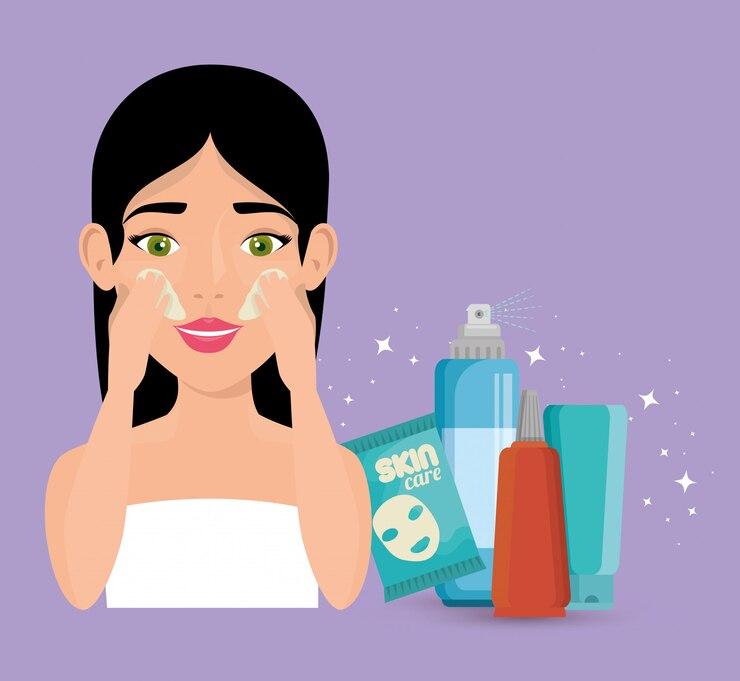
Everything You Need to Know About Makeup Spray
In the ever-evolving world of skincare and beauty, face mists and sprays have carved a significant niche. Whether you're preparing your skin for makeup, setting your final look, or simply giving your face a refreshing burst of hydration during the day, these products serve multiple purposes. Despite their popularity, many people still wonder about the differences between makeup spray, face spray, and facial mist. Understanding each of these can help you enhance your skincare routine and ensure your makeup looks fresh all day.
What is Makeup Spray?
Makeup spray, often known as setting spray, is designed to keep your makeup intact for long hours. Think of it as a sealant for your makeup. Once your foundation, blush, eye makeup, and highlighter are in place, a few spritzes of makeup spray can lock everything in. It's a favorite among makeup artists, especially for long shoots, weddings, or any event that requires flawless makeup for hours.
Makeup sprays often contain polymers that form a light, breathable film over your skin, preventing smudging and fading. Depending on the formulation, some sprays offer a dewy finish, while others provide a matte effect. This makes it suitable for various skin types—whether you have oily, dry, or combination skin.
What is a Face Spray?
Face spray is a more general term that encompasses a wide range of products meant to deliver moisture, soothe the skin, or cool it down. Unlike makeup spray, which is mainly used at the end of your makeup routine, a face spray can be used at any point throughout the day. It often contains soothing ingredients like rosewater, aloe vera, or cucumber extract.
Face sprays are popular during hot weather, after workouts, or in dry environments where skin can quickly lose moisture. Some face sprays are also infused with vitamins and antioxidants that nourish the skin, making them a multifunctional product in your beauty arsenal.
What is a Facial Mist?
A facial mist, while similar to face spray, typically has more skin-benefiting ingredients and is geared towards skincare rather than makeup. It serves as a light moisturizer and is often used after cleansing and before applying serums or moisturizers. Facial mist can help balance the skin’s pH, tighten pores, and prep the skin for better absorption of subsequent products.
Many facial mists also act as toners and are excellent for layering moisture without feeling heavy. For people with sensitive or irritated skin, a good facial mist can be calming and rejuvenating. They often come in fine sprays that distribute a gentle mist evenly across the face.
Key Differences Between Makeup Spray, Face Spray, and Facial Mist
It’s easy to get confused between these products, especially since they often come in similar bottles and are applied the same way. However, understanding their differences can help you get the most out of each:
|
Feature |
Makeup Spray |
Face Spray |
Facial Mist |
|
Primary Purpose |
Set makeup |
Refresh skin |
Hydrate and prep skin |
|
When to Use |
After applying makeup |
Anytime during the day |
After cleansing and before moisturizer |
|
Key Ingredients |
Film-forming agents |
Botanicals, water |
Humectants, vitamins |
|
Benefits |
Long-lasting makeup |
Cooling, light hydration |
Deep hydration, skin prepping |
Incorporating Sprays and Mists into Your Routine
Adding these sprays into your routine doesn’t require a complete overhaul. Here’s a simple guide:
- Morning: Start with a facial mist right after cleansing. This prepares your skin for the rest of your skincare routine.
- Midday: Use a face spray to refresh your skin. It helps cool down your face and revives your look.
- After Makeup: Finish with a makeup spray to ensure your makeup stays in place throughout the day.
- Evening: Use a facial mist again after cleansing to calm the skin and lock in moisture before bed.
Myths and Misconceptions
Many people assume all sprays are the same, but as we've seen, each type has a unique function. Another misconception is that oily skin types should avoid sprays. In fact, facial mists with light, oil-free formulations can help regulate oil production. Similarly, some believe makeup sprays are only for professionals, but even casual makeup users can benefit from using them for better durability.
Choosing the Right Spray for Your Skin Type
When selecting between makeup spray, face spray, and facial mist, consider your skin's needs:
- Dry Skin: Go for hydrating facial mists and nourishing face sprays.
- Oily Skin: Opt for matte-finish makeup sprays and light, non-comedogenic mists.
- Sensitive Skin: Choose sprays with calming ingredients like chamomile or rosewater.
Conclusion
Incorporating a makeup spray, face spray, and facial mist into your skincare and beauty routine can significantly enhance your skin’s hydration and your makeup’s longevity. Each product serves a unique role, and using them correctly can result in healthier, fresher, and more radiant skin. Whether you're looking to set your makeup, give your face a midday pick-me-up, or hydrate your skin deeply, knowing when and how to use these sprays can make a noticeable difference in your skincare outcomes.
